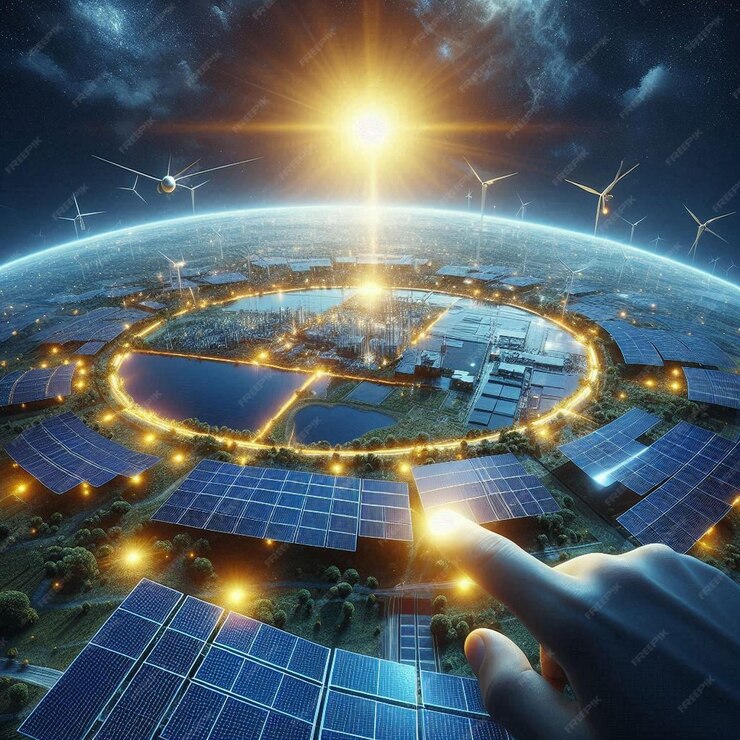Contatc
Energy Transition and Modern Grid Development: Proofing Sector
2025-02-12
Energy Transition and Modern Grid Development: Sustainable Future
The recent years have seen increasing awareness for the development of clean energy systems and thus the concepts of energy transition and modern power grid development have emerged. The combination of energy transition and modern grid development provides an insightful look at the future of energy systems. This article describes how these ideas apply to the energy sector, the ways that they are being implemented, notes the successes, and analyzes the future of a sustainable tomorrow.
Understanding the Energy Transition
The energy transition can be defined as the process of shifting from one type of energy mainly the primary sources of energy particularly fossil energy to other renewable sources of energy such as wind, solar, and hydro energy. In essence, the energy transition involves the process of deprefixing the energy sector, decreasing the intensity of greenhouse gases, and the impacts of climate change.
Pathways to a Clean Energy Future
The solution to this problem lies in the use of renewable energy technologies. Wind and solar power as well as other renewable energy sources’ availability is becoming the primary focus of nearly every energy supply system in the world. With these sources being incorporated into the national electricity supply system, insistence on smart grids, as well as advancements in grid technology becomes more important.
Decarbonizing the Power Sector
The power sector transition can be considered as the most critical process in the energy transformation that can be named the decarbonization of the power sector. Through a decarbonization process of the electricity sector, it is possible to reduce greatly its emissions of carbon. While the deployment of renewable energy resources is necessary, every bit necessary is energy storage that comprises battery storage and smart inverters for the smooth running of the power grid.
The Role of Modern Grid Development in the Energy Transition
Thus, the modern grid development is the key to the energy transition. As the sources of power generation from the sun, wind, and other such natural resources get harnessed more and more the conventional grid which was meant for concentrated power generation based on fission fuels is no longer sufficient. This is where modern grid development comes in and the improvement of the flexibility, reliability, and effectiveness of the energy grid.
Smart Grid Technologies
Smart grids could be considered as the next step in grid evolution that has appeared quite recently. Advanced technologies of energy management allow the grid to respond to the changes in demand and supply on its own which makes the grid to be more reliable and reliable. These grids are fitted with various sensing devices, monitoring devices, as well as data analysis devices to help in their functioning. For instance, smart meters help consumers regulate their energy use and provide utility companies with an efficient and optimal way of distributing supply and demand.
Distributed Generation and Microgrids
Another essential factor for current grid development is distributed generation. Given the current trends in the installation of household and company solar panels, wind, and other distributed systems of energy, electricity does not need to be conveyed long distances from power plants. Microgrids are localized energy systems that are gradually becoming useful in the effective management of energy in a more efficient, integrated way.
Integrating Energy Storage
The other critical element, or component of the contemporary grid system is energy storage. Innovations such as batteries and pumped hydro storage are making it possible for the grids to store power that is produced at certain times irrespective of the renewable energy sources. This has the benefit of assuring that there be adequate capacity to meet demand and increase the flexibility of the grid system.

Key Technologies Driving Grid Modernization
In the process of striving toward the viability of renewable energy resources, a spectrum of advanced technologies affects the grid. It will be useful now to focus on the most significant changes that occurred over the last thirty years.
Advanced Distribution Management Systems (ADMS)
One of the major emerging advancements in the grid is the Advanced Distribution Management System commonly known as ADMS. These systems supply the utilities with a full picture of the grid performance as they enable the direct adjustments made in the operations of the grid. This is because of the ability of ADMS to detect outages and prevent failures as well as adjust to the existing grid conditions optimally hence enhancing grid reliability.
Cybersecurity for Smart Grids
This is simply because modern grids are as much part of the Internet as they are electric power systems, with cybersecurity being the most important issue to consider. Smart grids use information and communications technology and hence are prone to cyber threats. It would therefore be important for these grids to be protected from these threats so that they can continue to efficiently serve their intended purpose. It is also the reason that stronger measures need to be incorporated into the existing security structures of the entire grid infrastructure.
Real-Time Monitoring and Wide Area Monitoring Systems (WAMS)
Real-time monitoring of the grid is yet another central concept of modern grid development. Wide Area Monitoring Systems (WAMS) and phasor Measurement Units (PMUs) allow utilities to monitor the stability of the grid over vast geographical terrains. These systems assist the utilities in identifying early any challenges in the grid and dealing with them before blowing up, hence strengthening the grid.
The Future of Energy: Combining Energy Transition and Modern Grid Development
In the future, energy will be directed at the construction of new grids relevant to the modern world. Given the ever-growing focus on decarbonization of the power sector and utilization of more renewable energy, the continuous development of modern grids will be more and more important.
For example, the ability to integrate charging stations for electric vehicles will be critical in achieving the change towards electric usage. Blockchain technology for energy trading and management using AI has the capacity for improvements in energy grid usage.
Advanced grid technologies, provision of storage systems, as well as a global cybersecurity system, will ensure that our grid withstands the shift to renewable energy while being efficient and secure.
Conclusion
The energy transition and modern grid development are fundamental to creating a sustainable, clean energy future. As we strive to reduce carbon emissions and integrate renewable energy into the grid, modern grid technologies will play a pivotal role in ensuring that this transition is both successful and equitable. For more on smart grid technologies, energy storage solutions, and renewable energy integration, visit the XY Tower website, where we provide the latest insights into grid modernization and the global energy transition.

Hey, I’m Chunjian Shu
"X.Y. Tower: Reliable, innovative solutions for high-quality towers and electrical equipment with professional service.
